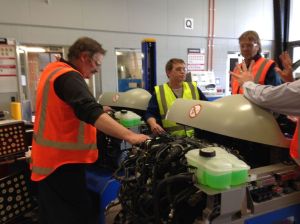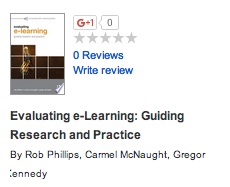One of the many good things about working in a polytechnic is the variety of people, interests, trades, professions and perspectives on hand.
Recent cost cutting meant that some of us were allowed to go to a Shar-e-Fest conference in Hamilton but were asked to restrict costs. So we drove.
Four of us in a car.
We hope that ‘management’ understand the value of these experiences and that they far outweigh any organised activity or team building. The value lies not only in the information we garner from the conference but also the information and knowledge we share in a relaxed environment. I think too that these kinds of events help staff understand where they fit in the bigger professional picture and that while we think we have nothing to share – we do.
The conference was good. My colleagues were most interested in the MotorTrain presentation since it’s in their area, and I was impressed with what I saw, although we did discuss the difference between a Holden and

a Ferrari. The Holden, we agreed, still worked well and was easy to fix if necessary.
We also, in that vein, visited the Wintec trades area and were impressed with the efficient looking building and the integrated approach to teaching and learning.
I also garnered: Information about a book:
• A link to follow about Chris Creagh who writes about student engagement
http://profiles.murdoch.edu.au/myprofile/chris-creagh/
• Dilani Gedera who writes and talks about teacher presence and learner engagement http://coursecast.its.waikato.ac.nz/Panopto/Pages/Viewer.aspx?id=20227b83-853c-4d0b-835d-08d41baf056e
• From Stephen Harlow at Waikato University some valuable information about meta research. Stephen delivered this in a clear easily digestible manner – and explained that Hattie has conducted a meta analysis of educational research that shows the tried and true are the most effective: that the greatest effects on student success are : clarity, feedback, relationships, and spaced learning.
• From Patricia Gleasen at Wintec some useful examples of how to implement flipped classrooms.
• From Learning Works a chance to view the MotorTrain projects
• From John Clayton an overview of the integrated approach taken at Te Awanuiarangi and the process of quality assurance as well as ways to use Moodle for collaboration.
Discussion on the way back centred on how we could share the information, what we needed to do next, how we could collaborate and some things that we as polytechnic staff could do to move ourselves along for the benefit of students.
It was fun. The mountains looked fantastic, the Desert Road its usual stunning self and Hamilton was relaxed, friendly warm and the conference extremely worthwhile on multiple levels.


 of the day, as the world gets smaller with all the technologies that enable us to connect beyond borders, everyone should be treated truly without judgment except for the benefit and effort they bring. We have to up our game, quality, and aim our focus at the end results. To get there, we have to leave all inhibitions, face the challenges with much gusto, enough of the ‘bring-others-down-to-get-ahead’ syndrome, we’re all heading the same way, it’s faster and easier if we help each other.
of the day, as the world gets smaller with all the technologies that enable us to connect beyond borders, everyone should be treated truly without judgment except for the benefit and effort they bring. We have to up our game, quality, and aim our focus at the end results. To get there, we have to leave all inhibitions, face the challenges with much gusto, enough of the ‘bring-others-down-to-get-ahead’ syndrome, we’re all heading the same way, it’s faster and easier if we help each other.

